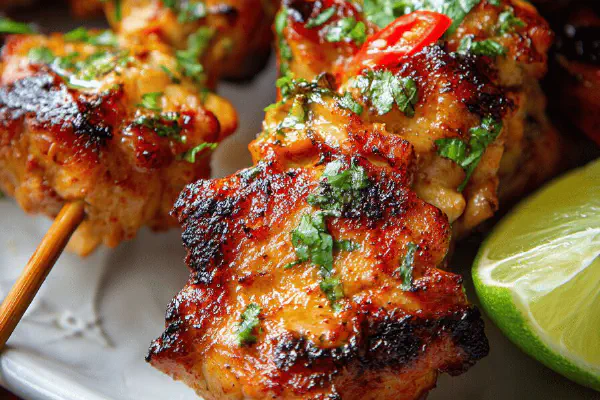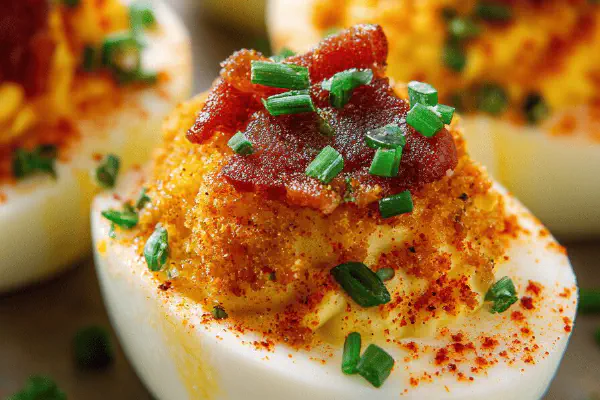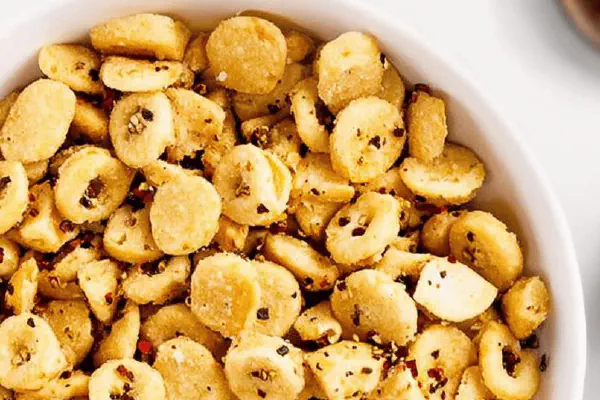Spiced Pickled Eggs

By Emma
Certified Culinary Professional
Ingredients
- 6 large hard-boiled eggs, peeled
- 100 ml (just under 1/2 cup) tomato passata or strained tomato purée
- 50 ml (3 tbsp plus 1 tsp) white wine vinegar
- 45 ml (3 tbsp) fresh lime juice
- 5 ml (1 tsp) Worcestershire sauce
- 5 ml (1 tsp) prepared horseradish
- 2.5 ml (1/2 tsp) celery seeds
- 2.5 ml (1/2 tsp) whole black peppercorns
- 2.5 ml (1/2 tsp) kosher salt
- 1/2 chipotle chile in adobo, chopped finely
- Optional: celery leaves for garnish
About the ingredients
Method
- Start with cold, peeled hard eggs nestled in a 700 ml glass jar or bowl — no cracks, no whites peeking out.
- In a small saucepan, combine tomato passata, vinegar, lime juice, Worcestershire, horseradish, celery seeds, peppercorns, salt, and chopped chipotle.
- Bring mixture to a lively boil just to bloom spices and blend flavors; bubbles should rapidly form, not a simmer.
- Immediately pour the hot marinade over eggs, filling jar to cover them completely; expect slight bubbling sounds as heat meets cold eggs.
- Allow marinade and eggs to cool at room temperature, cover tightly, then chill in fridge.
- Rest at least 2 days up to 4 for tang and heat to get through whites; eggs darken, marinade thickens slightly.
- For best bite, remove eggs, slice or halve, scatter celery leaves on top for green freshness and crunch contrast.
- Marinated eggs keep well for up to 4 weeks refrigerated—if any cloudiness or off-smells, toss immediately.
Cooking tips
Chef's notes
- 💡 Cold eggs first, no cracks. Arrange white side out for marinade to grab fullest. Jar needs glass; plastic hides color shifting, smells weird. Peeling done early means no peeling mess in marinade later. After pour, bubbles happen—hot hits cold. That’s scent bloom and spice soften. Do not stir post-pour or marinate hue freaks out.
- 💡 Boil marinade just right. Not a simmer, full lively boil, to bloom spices—celery seeds pop flavor, peppercorns soften skins. Overheat and tomato thickens wrong, masks brightness. Quick pour after boil crucial; slow cooling dulls horseradish punch and chipotle smokiness. Timing here defines final flavor shadows in eggs.
- 💡 Use chipotle in adobo or smoky alternatives. If not canned, sub with smoked paprika plus tiny cayenne, rough but same deep heat. Worcestershire adds umami whispers; tamari or soy sauce get close when vegan or out. Lime juice over lemon gives brighter zip—lemon can dull the edges a bit. Adjust salt last; kosher salt preferred, table salt too sharp here.
- 💡 Marinate minimum 2 days, up to 4 tops. After that spices overwhelm egg texture. Color deepens ruby, whites turn tangy-soft, yolk stays firm. Passage under fridge chill important; keep jar closed but vent plastic lids slightly to avoid pressure build-up. Any cloudiness, smells off - toss. No risks with eggs and acid blends.
- 💡 Save leftover marinade. Dilute olive oil, whisk fine, use as assertive dressing. Celery leaves garnish - swap parsley or dill if celery aroma offends. Crunch contrast and fresh notes not just looks. Slice eggs with serrated to avoid tearing whites; good presentation changes perception of simple snack. Timing flavor shifts big deal here.
Common questions
How long to marinate eggs?
At least 2 days. Up to 4 max. More means spice takes over texture. Color shifts ruby, soft white texture. Refrigerator only. Not airtight; plastic lids vent needed or jar lids snug.
What if no chipotle in adobo?
Use smoked paprika plus cayenne pinch. Different but close smoky heat. Fresh jalapeño more sharp, less depth. Avoid plain chili powders; lose smoky earthiness. Adjust horseradish if milder chipotle sub used.
Why peel eggs before marinating?
Peeling beforehand avoids bitter white detachment inside jar. White surface contact with acid crucial for flavor. Cracked eggs leak white and ruin batch. Cold shock after boiling aids peeling, prevent green yolk ring.
How to tell if marinade spoiled?
Cloudiness or off smells first flag. Discard immediately, no taste test. Check fridge temps. Acid delays but doesn’t stop spoilage. If unsure, toss. No second chances with eggs and acid-based marinades.



